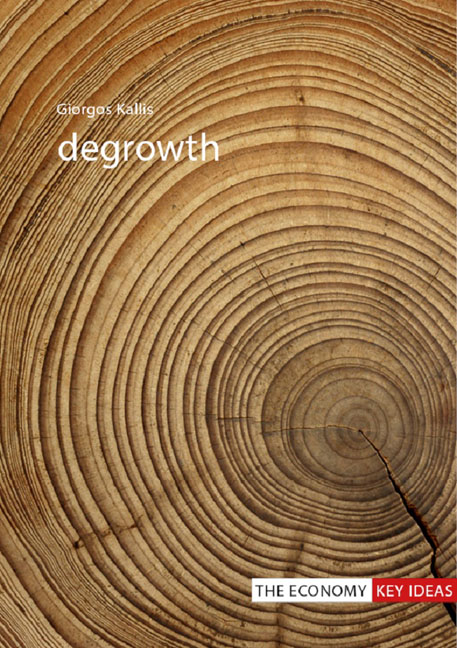3 - Economic growth from a degrowth perspective
Published online by Cambridge University Press: 09 August 2023
Summary
What is growth?
Economic growth is acceleration in the production of goods and services. An increase in the speed of production means an increase in the amount of goods and services produced in a given period of time. Global growth is a twentieth-century phenomenon (Figure 3.1).
An increase in GDP is the epiphenomenon of an integrated growth process (Sekulova et al. 2017) that involves the accelerated mobilization of the work of humans and non-humans, the accelerated investment of surplus into machines that produce more, and the accelerated extraction and transformation of matter or disposal of waste. Indeed, it is not only GDP that grew exponentially in the twentieth century: all indicators of work, social metabolism and environmental impact accelerated (Figure 3.2).
Growth is not only a material process; it is also a cultural, political and social process. Growth is an idea produced, imagined and instituted. It was first produced materially in England and other colonial and industrial centres in the eighteenth and nineteenth centuries. And in the 1930s it was conceptualized and counted, before entrenching itself as a global ideology in the 1950s. After Dale (2012) and Purdey (2010) I call this ideology “the growth paradigm”: the idea that perpetual economic growth is natural, necessary and desirable.
This chapter looks first at the material processes of work mobilization and surplus production that is behind growth. We then revisit the history of the growth paradigm, before turning to limits to growth.
The production of growth
In standard growth theory, the level of output depends on capital and labour, but sustained growth is the result of technology. Econometric studies (statistical studies of many countries and years correlating attributes of these countries with their GDP) show that differences in output are explained not so much by differences in capital or labour but by a third factor, capturing pretty much everything else, named “total factor productivity”. This black box of technological progress includes factors that may influence productivity, and which were found separately to correlate with growth, such as institutions and social capital, education and “human capital”, energy or infrastructure.
- Type
- Chapter
- Information
- Degrowth , pp. 61 - 84Publisher: Agenda PublishingPrint publication year: 2018

